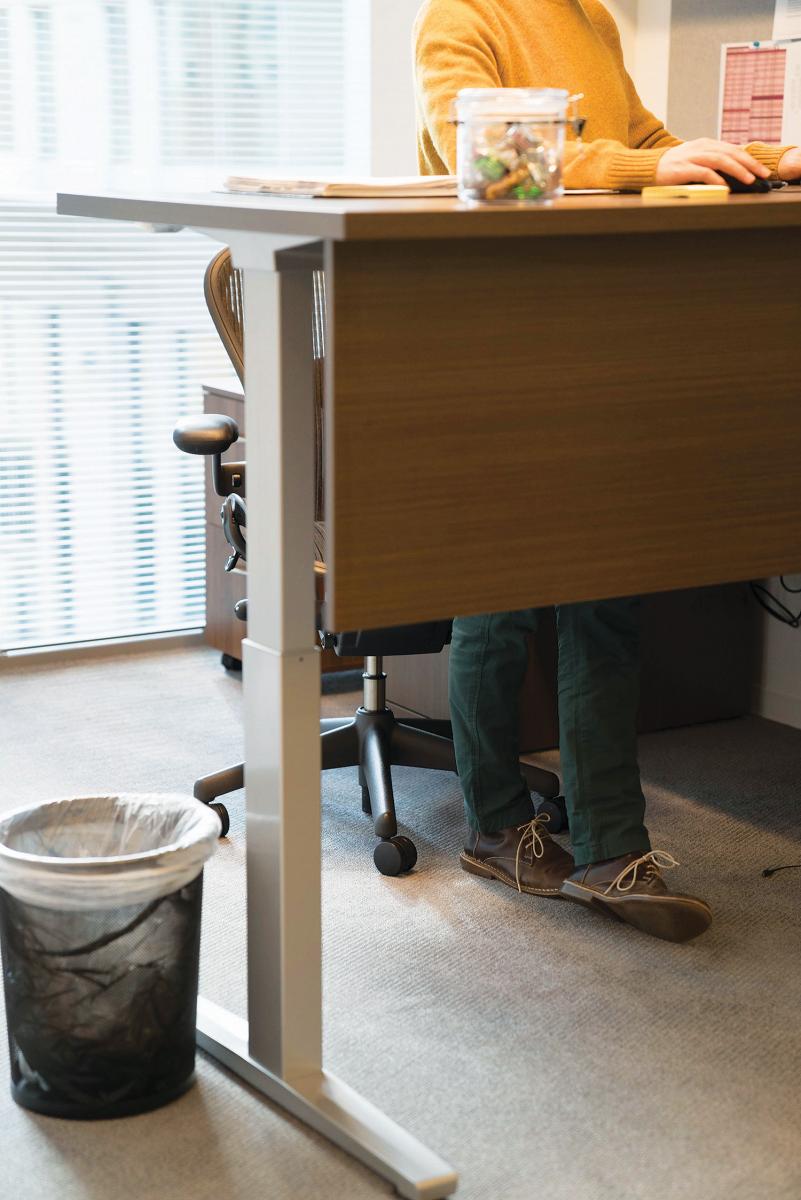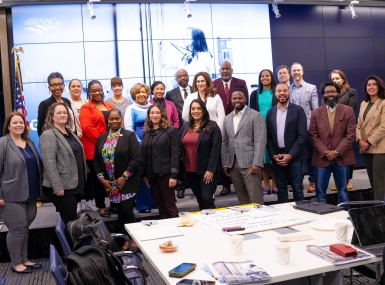These Boots are Made for… Standing
Author

Erika Philpot

Rose Winkeler
Upcoming Events
Related News
From Coconino County, Ariz., HR gurus and contributors, Erika Philpot, human resources director and Rose Winkeler, deputy county attorney, address common and critical HR questions from their ‘boots on the ground’ perspective, while HR Doctor Phil Rosenberg continues his unique vision of the HR practice.
Sitting is the new smoking.” Many employees have heard this phrase or read related articles in health magazines and are trying to be proactive with their wellness. To promote health, get up and move around. As a result, requests for standing desks pour in to your office. Is it something you should purchase? Do you have the budget to purchase the desks? Will the desks even be used or is this just a passing fad?
 Standing desks can assist employees to stand up more frequently and to be aware of their wellness, but they have drawbacks too. If you are dealing with this issue, here are some things to consider.
Standing desks can assist employees to stand up more frequently and to be aware of their wellness, but they have drawbacks too. If you are dealing with this issue, here are some things to consider.
First, it is important to remember that some employees may have a need for an alternative workstation, as documented in a doctor’s note. In these cases, you should work with Human Resources to engage your ADA process, which will include ADA forms and an interactive process to determine whether a standing desk is a reasonable accommodation. Once a standing desk has entered the department, several new requests will arrive. You can’t respond with, “But Sue’s standing desk was due to an ADA accommodation.” So do you just buy one for everyone and consider it a good retention and morale strategy?
Standing desks are not a solution for every employee. There are pros and cons to every workstation. Employees who stand all day will tell you standing has its own drawbacks. Employees with back, knee or foot pain may not be able to stand for prolonged periods of time. According to Cornell University’s Ergonomics Web, CUERgo Web, standing requires 20 percent more energy than sitting and is less effective for performing fine motor tasks like driving, computer work or creating detailed drawings. Employees with standing desks also need tall chairs, which again can be difficult for some employees. Where is the happy medium?
Some new standing desk models have the ability to be adjusted up and down. This allows employees to stand for periods of time and sit when necessary. This type of desk means there is no need to purchase another chair. However, the work surface may not be as wide as some employees need to accomplish their daily tasks. Also, raising and lowering the surface may be difficult for employees with arm, shoulder, elbow and back restrictions, or for employees who are below a certain height.
One possible solution is to have a trial standing desk, where employees use the desk for a month and see how much they choose to stand, if they can manipulate the desk and whether they like the workstation on a day-to-day basis. Employers who offer a trial desk often have a process to request the trial, and may have employees with ADA requests also try the sample before purchasing. Beware, however, that some employees might believe they were promised a standing desk if they try it and like it. If they try the desk in August and see another employee who tried the standing desk in September get a standing desk before them (perhaps it is an ADA situation) morale might suffer. Communicating clear expectations and budget constraints is important.
Another possible complication of standing desk introductions is the need for other equipment. In addition to the desk itself, the employee might now need a longer monitor cord, a wireless mouse and keyboard, a longer phone cord, and different floor mat on which to stand. Beware of these budget implications. The desks might also impose additional burdens on facilities and information technology departments. Your risk manager may have an ergonomic assessment consultant you can speak with to ensure ergonomics for complicated cases.
There is no one-size-fits all answer when it comes to standing desks. In all cases, be aware of “want” versus “medical need,” or ADA request versus wellness request.
Is standing the answer? Cornel University suggests that a combination of sitting and standing is ideal and recommends sitting for computer work. Perhaps part of the solution might be as easy as getting up every 30 minutes to walk to the copier, get a file out of a filing cabinet, walk to a meeting or walk over to collaborate with a colleague. Encourage employees to take a minute to stretch and to adjust the distance of their vision focal point. This solution is free, after all.
Standing desks are a tool that may be used in several situations, but it is important to keep the end goal in mind — we want to create a workplace that is safe, reduces the frequency of workplace injuries, and allows employees to be their most productive and effective for the good of customers.
Share with us — Send us feedback on your experience with standing desks. We would love to hear about lessons learned and successes. Shared ideas may be included in a future edition with your name and contact information to allow for reader networking.
Attachments
Related News

County Countdown – April, 22, 2024
Every other week, NACo’s County Countdown reviews top federal policy advocacy items with an eye towards counties and the intergovernmental partnership.

Equity task force shares preliminary ideas for report
NACo's Equity + Governance Task Force is working to identify, prioritize and develop tools and resources counties need to advance equity in our communities.

Citizens help parish hire administrator
Jefferson Davis Parish, La. looked to its civically-engaged residents to help take politics out of hiring an administrator.